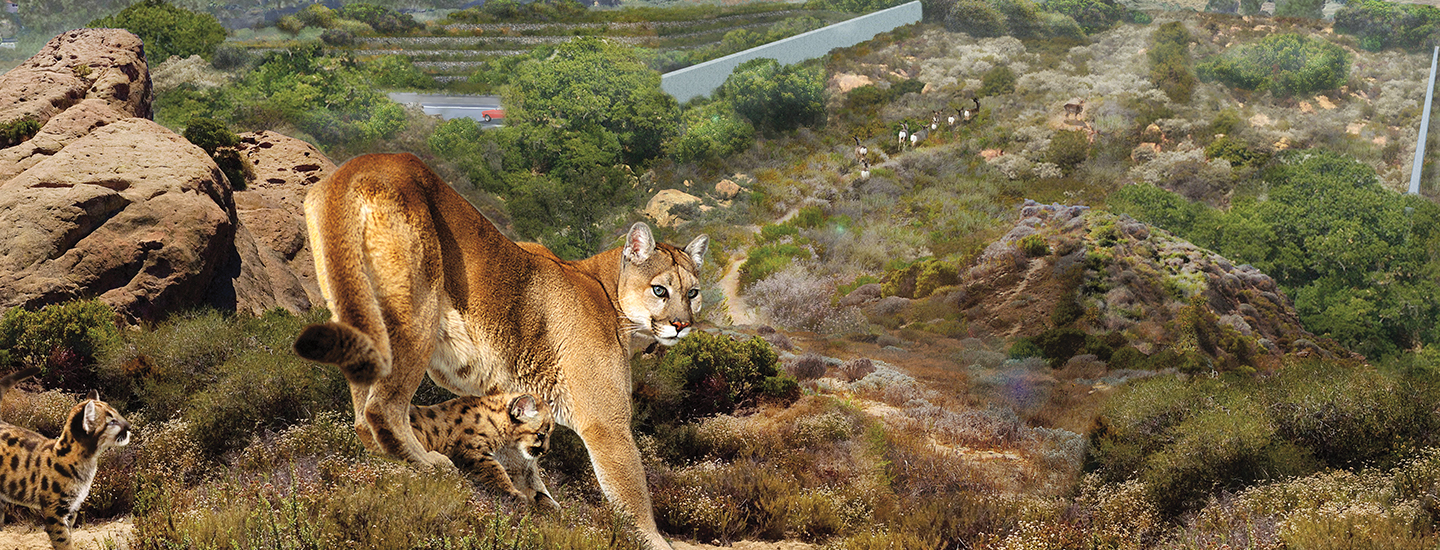This mountain lion and her cubs might appear to be strolling through their natural habitat. But take a closer look. The felines are about to enter a human-made landscape—one designed to save the lives of the endangered cats and other wildlife.
This illustration features the proposed Liberty Canyon Wildlife Crossing in California. Wildlife crossings are built under or over busy highways to protect animals from being hit by vehicles.
The proposed pathway in California is designed to span 10 lanes of U.S. Highway 101 in the Santa Monica Mountains, which would make it the largest wildlife crossing in the world! Construction could begin as soon as November.

